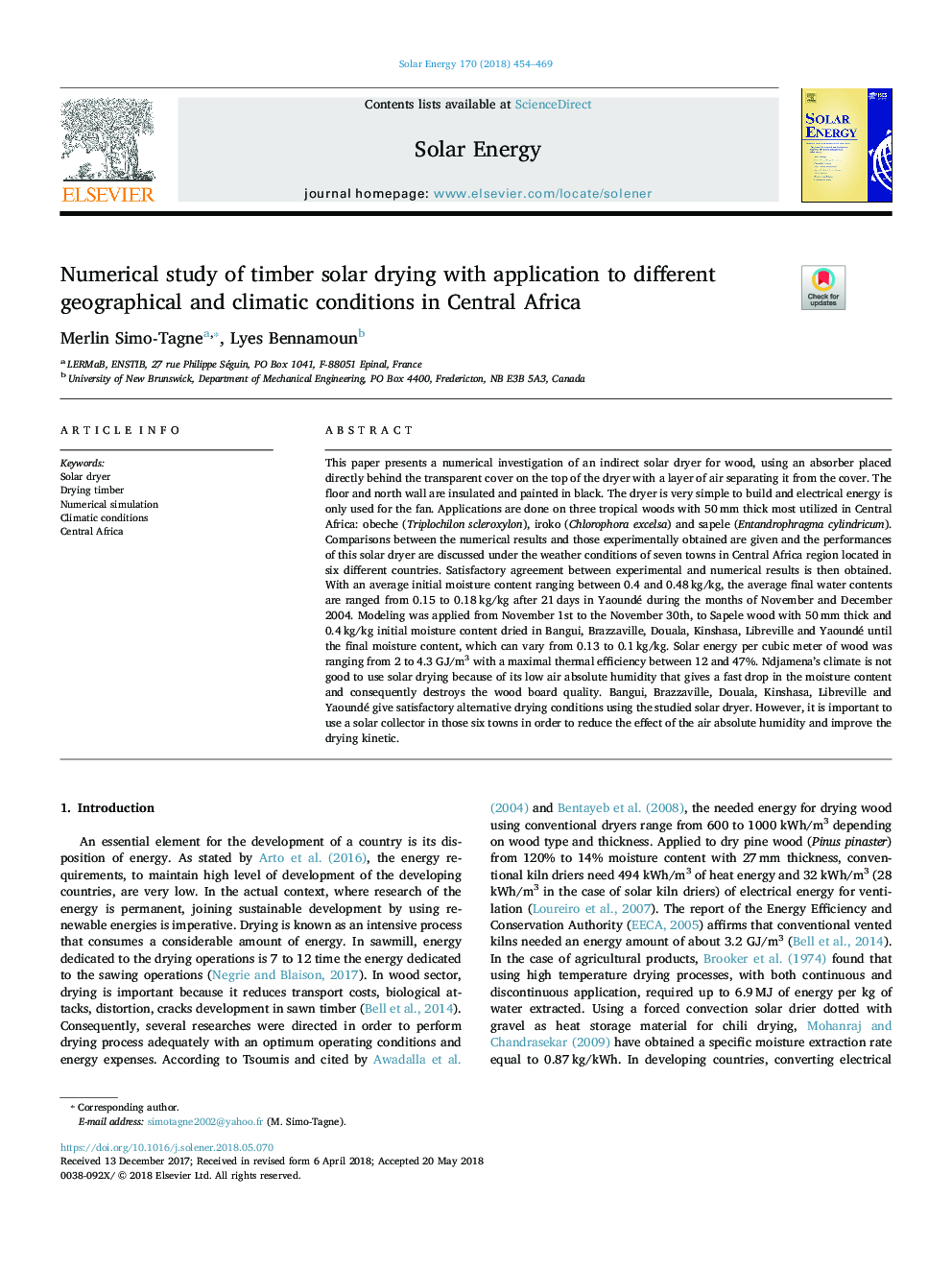| کد مقاله | کد نشریه | سال انتشار | مقاله انگلیسی | نسخه تمام متن |
|---|---|---|---|---|
| 7935080 | 1513048 | 2018 | 16 صفحه PDF | دانلود رایگان |
عنوان انگلیسی مقاله ISI
Numerical study of timber solar drying with application to different geographical and climatic conditions in Central Africa
ترجمه فارسی عنوان
مطالعه عددی خشک کردن چوب خورشیدی با استفاده از شرایط جغرافیایی و آب و هوایی مختلف در آفریقای مرکزی
دانلود مقاله + سفارش ترجمه
دانلود مقاله ISI انگلیسی
رایگان برای ایرانیان
کلمات کلیدی
خشک کن خورشیدی، خشک کردن چوب، شبیه سازی عددی، شرایط آب و هوایی، آفریقای مرکزی،
موضوعات مرتبط
مهندسی و علوم پایه
مهندسی انرژی
انرژی های تجدید پذیر، توسعه پایدار و محیط زیست
چکیده انگلیسی
This paper presents a numerical investigation of an indirect solar dryer for wood, using an absorber placed directly behind the transparent cover on the top of the dryer with a layer of air separating it from the cover. The floor and north wall are insulated and painted in black. The dryer is very simple to build and electrical energy is only used for the fan. Applications are done on three tropical woods with 50â¯mm thick most utilized in Central Africa: obeche (Triplochilon scleroxylon), iroko (Chlorophora excelsa) and sapele (Entandrophragma cylindricum). Comparisons between the numerical results and those experimentally obtained are given and the performances of this solar dryer are discussed under the weather conditions of seven towns in Central Africa region located in six different countries. Satisfactory agreement between experimental and numerical results is then obtained. With an average initial moisture content ranging between 0.4 and 0.48â¯kg/kg, the average final water contents are ranged from 0.15 to 0.18â¯kg/kg after 21â¯days in Yaoundé during the months of November and December 2004. Modeling was applied from November 1st to the November 30th, to Sapele wood with 50â¯mm thick and 0.4â¯kg/kg initial moisture content dried in Bangui, Brazzaville, Douala, Kinshasa, Libreville and Yaoundé until the final moisture content, which can vary from 0.13 to 0.1â¯kg/kg. Solar energy per cubic meter of wood was ranging from 2 to 4.3 GJ/m3 with a maximal thermal efficiency between 12 and 47%. Ndjamena's climate is not good to use solar drying because of its low air absolute humidity that gives a fast drop in the moisture content and consequently destroys the wood board quality. Bangui, Brazzaville, Douala, Kinshasa, Libreville and Yaoundé give satisfactory alternative drying conditions using the studied solar dryer. However, it is important to use a solar collector in those six towns in order to reduce the effect of the air absolute humidity and improve the drying kinetic.
ناشر
Database: Elsevier - ScienceDirect (ساینس دایرکت)
Journal: Solar Energy - Volume 170, August 2018, Pages 454-469
Journal: Solar Energy - Volume 170, August 2018, Pages 454-469
نویسندگان
Merlin Simo-Tagne, Lyes Bennamoun,
